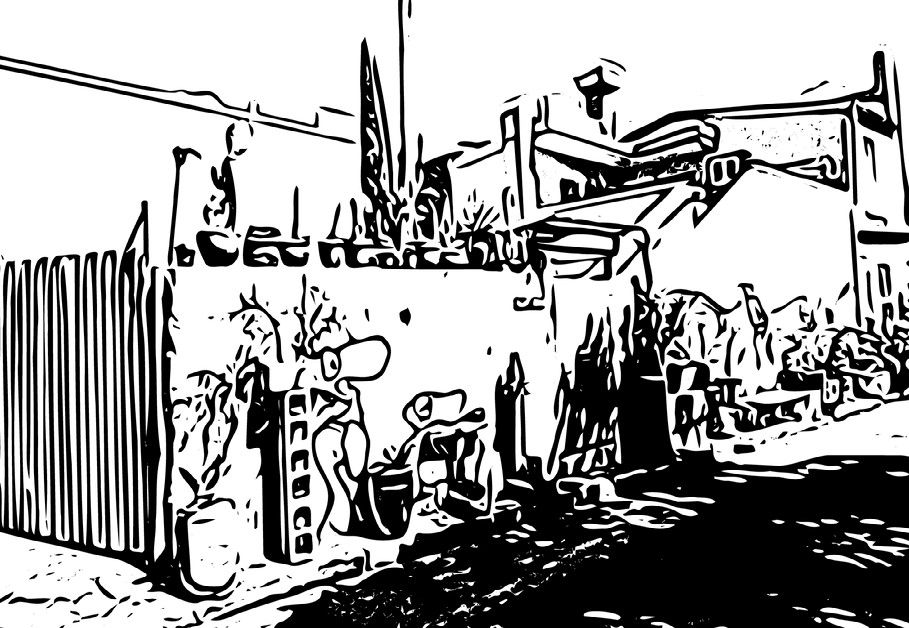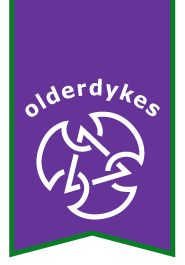
04 Apr How and where will we live as we age? 8 October 2022
All was ready for Dinner and Discussion for Older Lesbians but the warning of a storm on the Saturday made the planners anxious that we may not have an audience for our speakers. But no, braving the rain, 23 women arrived carrying plates, and casseroles of delicious food. While the storm raged, we ate and socialised.
At 7pm we gathered for the main event. The Wangal People, traditional owners of the land we were meeting on, were acknowledged. Then all those present were welcomed, in particular three new participants received enthusiastic applause.
Sylvia introduced the topic with a few factual reasons why many aged women, particularly single women, have limited superannuation or savings. Also, she gave some of the reasons why women may find themselves under housing stress, despite owning their own home. For renters the situation is even worse, and women over 55 years of age are the growing homeless in Australia.
Mary
Retirement Complex
Our first speaker, owned her own much, loved, townhouse, in a good suburb. She loved her small garden and the company of her dog. At age 75, only a few years after retirement, Mary’s daughter suggested she might like to live in a granny flat next to the large, new house she and her husband were buying, and planning to renovate. Very much a family woman, the idea of security and family nearby was appealing to Mary. She sold her home unit for a good price and invested the money in her daughter’s plan. She was to live at her daughter’s farm, on the other side of the Blue Mountains, in a fairly remote spot, while building went ahead. She sold much of her furniture and had to give up her dog.
Sadly, council regulations and other hold-ups meant that Mary was basically homeless for two years. She missed her friends and social life, so rented a flat in the city. Her savings were gradually being depleted. So, at last, she decided to pull out of the plan and find somewhere secure to live. This did cause conflict with her daughter, now resolved. There was of course a loss of money in making so many changes. She talked with some of her family members, friends, and those she knew seeking similar retirement homes.
Mary strongly recommends talking to those who have similar ideas to share information. She is now living in a small retirement complex owned by Uniting Church, known to be lesbian-friendly. Nothing is perfect and Mary gave a few examples of the need for flexibility, and an open mind when living in such close proximity to others. Still, she is happy in her lovely two-bedroom unit, set in a garden and accessible to public transport.
Kaye
Buckland Retirement Village
Kaye could not be present but Diann read out her intended presentation.
Why you chose this living project?
- wanted to be free of house & garden maintenance
- wanted more time to enjoy/develop other interests as I aged
- best option financially for remaining in the area and living independently.
My 2-bedroom unit, 69 m² in 2011 cost $267,000. A garage cost $12,000. At least $100,000 less than what was available on the open market. And of sounder construction! From December 2017 onwards my estate is guaranteed $186,000. For a new resident today, it would cost $420,000 and the garage $15, 000. The resident ‘loses’ 5% every year of their ‘going in’ price for 6 years. If I was unhappy and wanted or needed to leave, say after 22 months, Buckland would pay back $240,300. That’s $267,000 – [5% x 2 years of $267,000]. That’s how they are able to cope with the open market. Recently a 2 bedroom unit with a garage in S’wood sold for $475,000. I’m better off here with these maintained facilities, grounds and services. Monthly fee, a bit like council rates, but includes water is currently $392.
Why it is a good one for older lesbians?
- a lesbian couple I meditated with weekly in their new section villa (bought off the plan in early 2000s) suggested I make enquiries about a unit in the ‘old section’ (constructed in 1985). Now there are 5 of us in this retirement village. Website www.buckland-rv.com.au has good photos and information
- my house sold quickly & I was able to move in straight away. NO WAITING. Many tell stories of waiting up to 4 years. I felt WELCOMED. December 2011
How does one go about accessing this form of living arrangement?
- recommendations from friends and your local/social networks.
- luck with careful risk taking that it can be a suitable base for the next stage of your life and core beliefs.
What may be some of the difficulties with the living project?
- conflict with others, innocently upsetting others established routines eg hanging out my washing on their washing line day L
- stereotype assumptions: seeking common ground & developing skills around different points of view eg Same Sex Marriage.
- greater frequency of illness & dying on this property than in my old street. 4 of my immediate neighbours died in my first 3years here.
- due to closer proximity and no fences, I felt more easily seen, and vulnerable to less privacy, apparent gossip, assumptions, and misunderstandings. It is possible to hear conversations outside and approaching immediate neighbours.
I had to develop my Brazen Transparency Skills; that took about 3 years. Same Sex Marriage legislation validates that I’m a full citizen who has chosen not to marry.
- limitations: not allowed to do any external or internal building changes. Like solar panels or change the colour of any of the cream-coloured walls.
- limited storage space.
- guests are limited to a maximum of 3 nights per stay.
What other thoughts have you for living situations in old age?
Travelling to our events and gatherings, highlights for me were ‘family’ stayovers on the way there and home, and our concerts. I’m doing very little of that now.
Treats I’d like to be part of are
- Swap visits.
- Older dyke travelling performance group.
Why come to Buckland
You will be just over 1km from Springwood shopping centre.
You will be just 20 minutes to Penrith and 75 minutes to Sydney by car.
The village is situated, according to many experts, in the best climate in the world and is free of city pollution.
Springwood is serviced by fast, electric, air-conditioned trains which will take you to Sydney in approximately 75 minutes.
Buckland has
- 5 hectares of beautiful, natural bushland.
- 144 bed residential aged care facility.
- 165 self-care units and cottages (over two sites).
a community centre comprising library, lounge, indoor bowls area, table tennis, craft room, commercial kitchen and an auditorium which seats almost 300 people.
a Residents Forum which caters for welfare and social activities as well as input into the running of the Village.
- wheelchair access to all units and cottages.
- regular bus services provided by a private bus company.
- its own buses which are used for local village transportation and regular outings.
History
Sir Thomas Buckland, renowned philanthropist, who at the time was the Governor of the Bank of New South Wales, founded the organisation in 1934. Sir Thomas Buckland acquired land at Springwood and proceeded to build a hospital for women, whom for various reasons required specialist medical care.
Since Buckland’s inception as a Convalescent Hospital in 1934 the organisation has now progressed from being an innovative edifice of the thirties to housing the children from the Burnside Homes during the forties to again returning to a hospital for women in the fifties.
Today the organisation has expanded its array of services to providing many self-care options, and aged care residential services in the Springwood area.
The Facility
The Buckland Retirement Village provides a wide range of independent living options, including 1-bedroom units, 1 bedroom with den units, two- and three-bedroom units plus a variety of three-bedroom cottages.
All of these units are within close proximity to the main service centre as well as the John Lethbridge King Community Centre (local doctor, now deceased). The community centre offers a main auditorium, a library, a table tennis area, indoor bowls, a craft area as well as a large private lounge area.
www.buckland-rv.com.au
Buckland Aged Care Services
Springwood NSW 2777
Sue
Older Women in Co- housing
Like many I have lived with the fantasy of residing in a community of women. Whilst I have a lovely community around me within driving distance and lots if interesting things to do, I became very excited when I heard about a group of women around Melbourne and Daylesford who were looking to buy land and build a cohousing community of women. When I read about WINC, (Older Women in Co-housing), I became very excited about such a lifestyle with women, mostly lesbian, who hold compatible interests and values.
About 5 years ago a few women came together in Melbourne to discuss the possibility of buying land. Over time the group grew and became WINC, Older Women in Cohousing Inc. WINC is a membership-based group open to more women joining, and whilst the membership is changing, there is a core group who are committed to the vision. There is a strong emphasis on support and respect.
The model of cohousing was brought to America and beyond from Denmark by a then young architect, Charles Durrett. The idea behind cohousing is to build a small village of privately-owned housing with shared community buildings and land.
WINC is aiming to buy a piece of land, build about 30 strata title units and some communal facilities such as a community building with a kitchen and enough space for us to gather for meals etc, a workshop, a spa, and a couple of guest rooms. Lots of space to sit around and share cups of coffee and tea, and catch up. There will be vegie gardens and beautiful shared natural spaces. Pets and chooks welcome. The units will be universally accessible and environmentally sustainable with at least an 8-star energy performance.
Currently the group is close to buying a piece of land just outside Castlemaine (1.5 hrs from Melbourne, on a rail line, and an area that is L&G friendly, alternative and very arty). The vision is once contracts are in place, some women will buy or ½ buy, others will rent, and there will be some social housing.
There is an expectation of working contributions to the running of the community once it is up and running, and also in the lead up process, but flexible around capacity, eg, if you can’t dig gardens, you can makes cups of tea etc. It is a community run by the community.
The group has built up a lot of contacts with professionals, and many women who can help create this community (building eco-friendly units on a new piece of land is very complicated and involved). WINC also has members who are lawyers, and a retired architect advising. WINC meets monthly, both in person and on zoom.
For more info about the project and membership contact:
Sue: 0408 210 884
Mary-Faeth: secretary@winccohousing.org.au
Anneke: president@winccohousing.org.au
Website:
https://winccohousing.org.au/location/
Pearlie
Pearlie shared her somewhat circular journey in what she thinks was a journey to reconnect with her home. She and her long-term partner Meg moved from Manchester UK, in 1994, to a much-loved house in Wollongong. Their money did not extend to a similar home in Sydney. After many happy years in this house, Meg’s memory loss challenges prompted the move to a unit in Sydney, for more security, to be nearer public transport, friends and a greater social life.
In 2016 Pearlie had to face the death of her dear lover. While still deep in grief eighteen months later, she felt the need to move again, somewhere on her own, an independent living unit. She was worried about staying alone in the unit with all the memories of Meg around her, a comfort on one hand, but also a reminder of all that she had lost. She found a retirement place that suited her very well and put down a deposit. She put her unit up for sale. The pandemic, changes in the housing situation in Sydney, and other factors, meant the price she was offered was not worth going ahead. Pearlie decided to stay in her unit, despite losing the deposit. It was a hard decision, she said. She has rebuilt her life. She’s been Strata Secretary for the large complex where she lives for a few years now, jokingly describing her role as somewhere between customer service and older stateswoman.
She has come to terms happily with living alone, without Meg, but feeling surrounded by good memories and good friends.
Diann
Living in Social Housing
I live in social housing, once known as Public Housing. It was once a great option. A secure home; 30% of your income for rent, or market value, whichever was higher. The lease was ‘Continuous’, with no set end date, as long as the tenant looked after the property and stayed within the rental agreement guidelines. The NSW State government had a Department of Housing.
I moved in when this was still the case. We still had a mix of people living in housing. Some were full time workers; some were not able to work. Everyone paid 30% of their income.
The NSW Department of Housing no longer exists. It is now broken into two sections, the one that managed the tenancies and the one that owned the land and houses.
The Land and Housing Corporation makes the decisions to sell properties and force tenants to be rehoused. ‘Forcing’ also includes doing no maintenance on the property, until it is completely uninhabitable.
The money received for the sale of the houses does not necessarily go back into building more housing. It goes to the general coffers of the NSW government. The government sometimes enters into so-called ‘private/public’ agreements with developers. The developer gets our public land to build private housing, with a small percentage required to be social or affordable housing.
Housing tenancies are now split into several categories. The NSW government still describes tenancy as secure and affordable rental housing for people on low incomes with housing needs. However, it is now split into several categories:
Social housing, managed by the Department of Communities & Justice
Community housing, managed by non-government social housing providers
Affordable housing, supposedly open to people on a wider range of incomes than social housing. In most situations, affordable housing is managed by charities, not-for-profits, or community organisations.
A continuous lease is no longer offered. Housing is no longer ‘secure’. All new tenants who are assessed as eligible for a five- or ten-year lease are required to enter into a fixed term twelve-month probationary lease. Ten-year leases are for clients with ongoing housing and high support needs that are unlikely to decline. Five-year leases are for clients with housing and support needs that will most probably continue in some form over the next five years. Two-year leases are for clients with transitional or temporary support needs that will probably decline over the next two years or the client’s continuing need for social housing is unclear over the next five years because the household’s financial circumstances may improve.
Continuous leases apply only to tenants who were housed before 1 July 2005 and who have lived continuously in a property owned or managed by DCJ since being housed.
A very sad development of public housing in the State of NSW. More complaints and protest needed. All the same, I am grateful to have the house I live in.






Sorry, the comment form is closed at this time.